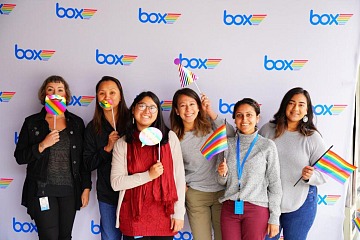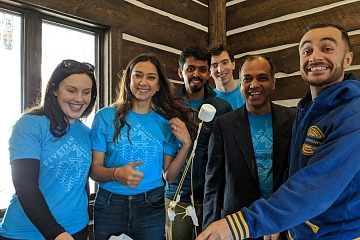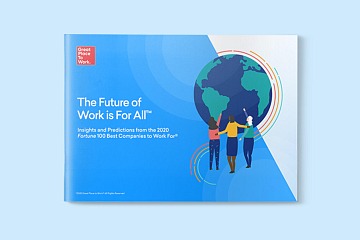Benchmarks & Trends, Diversity & Inclusion, Employee Experience, Generations at Work
How to attract, engage and retain the boomer generation.
Companies grappling with a skills shortage are looking to new technologies and ways to attract millennial talent. But one of the readiest sources of skilled labor is being overlooked.
The average labor force participation rate of 55-to 64-year-olds in the US in 2018 was 65% and is predicted to rise to 67.9% over the next ten years. It makes economic sense to realize the full potential of this group.
But, according to our research, this group’s talent is often latent, due to employers that don’t invest in their success. For every two older employees ready to innovate, there are seven that feel blocked at the average workplace. This means years of experience and perspective aren’t being fully utilized by most businesses.
It would be a mistake to think older workers want to stay at home sipping tea and playing backgammon. Many older people are willing to work longer than the US social security retirement age, 66. According to a study by Provision Living, the average age working seniors think they’ll retire won’t be until they’re 72.
How can you realize the potential of the aging worker population?
Provide technical training
According to research from the National Center for Biotechnology Information, one-third of 55-65-year-olds lack computer experience or cannot pass tech tests. Give access to online courses or host lunch training sessions so these workers can upskill.
Model their leadership ideals
In our analysis of over 267,000 employee comments in our Trust Index© survey, we found that each generation defines “leader” differently. Boomers (51-69-years-old) describe their leaders as a moral compass -a bright, strategic person who ensures values permeate the culture. Managers can better communicate with boomers by mimicking these leadership behaviors around older employees.
Tackle ageism
“OK, boomer.” The latest social media jibe is indicative of a generational divide. In June, a survey by The Associated Press-NORC Center for Public Affairs Research found that one in three Americans younger than 50 felt the aging workforce had negative implications for their own careers.
The World Health Organization has also stressed workplace ageism as an ongoing issue. Negative stereotypes can be overcome with visibility. Exposing young people to positive examples of older workers can shift preconceived beliefs.
Create an atmosphere of growth
Many older workers are resistant to change in the workplace because they believe intelligence is set and they cannot grow. But scientific studies prove this is not true. Instill a growth mindset in your older employees by embracing mistakes and replacing “failing” with “learning.” Show that you value process over result and emphasize growth.
Focus on more than salary
Some employers hold back from promoting senior workers as they demand higher salaries because of their seniority. But it’s not all about the money. When older employees experience a sense of genuine care, purpose, and being part of an excellent team, they feel a level of job satisfaction that money can't buy.
Help workers see your organization's purpose
Because boomers grew up in a time of mass-middle class affluence, many had space for self-actualization. Work went from a means of financial security to a source of self-expression. Echo values through community work, share origin stories and show how employees fit in beyond the org chart.
Don’t split (gray) hairs
There’s a lot that older employees share with their younger colleagues. Millennials may be known for valuing work-life balance and inclusion but our research shows that older employees want similar things. Boomers too, love giving back, seek job sharing and want involvement in decisions. Focus on those common threads.
"The American Dream" was promised to boomers as children and they pursue it. As a result, boomers are seen as ambitious and having a strong work ethic. Start shaping your workplace so that it elevates this hardworking and oft overlooked group. It's true that engaging older workers has more than one silver lining.
If you want to get a deep understanding of your older workers, our Trust Index survey will help you hone in on their workplace experience. Start listening and acting today.












